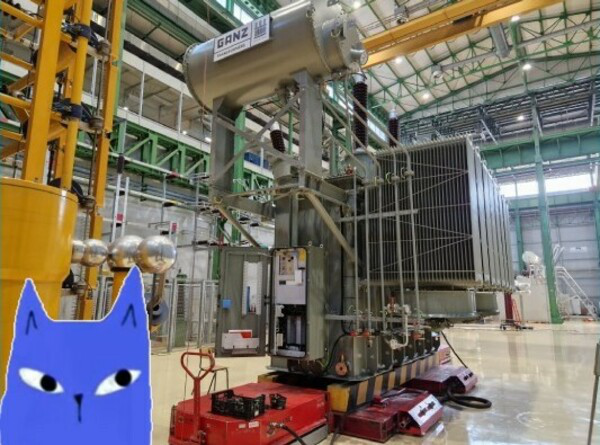BRUSH announce
UK: BRUSH Power Networks has announced the acquisition of KUS Power Engineering, a business that provides design, build and resource solutions for substations.
The move represents another significant step in Power Networks’ journey to providing evermore agile and adaptive engineering solutions that will future-proof the electricity network and enable a lower-cost zero-carbon future.
KUS will maintain its independence and autonomy, with BRUSH’s financial backing enabling the business to offer solutions for larger projects and bigger framework agreements than it currently delivers.
The acquisition will give BRUSH access to growing regional market segments, such as data centres and renewables, especially in and around the M4 corridor and within Scotland.
“The acquisition of KUS solidifies the BRUSH Power Networks profile. It will add technical and project management capabilities and capacities, give us access to growing regional markets, and broaden our DNO reach,” said Lars Hennecke, Strategic Business Development and Sustainability Director at BRUSH Group.
Source: BRUSH
October 25, 2022
The first intelligent transformers introduced
Hungary, Budapest: The first intelligent transformers have been manufactured at Ganz Transformers and Electric Rotating Machines Ltd.
So far, the company has produced three new transformers already equipped with the intelligent monitoring solution. For next year, the company has so far received orders for 18 more transformers equipped with the digital monitoring system. With this new development, the company aims to make the electricity industry more sustainable through intelligent transformers and the transformer market more efficient through 21st-century digital solutions. Ganz also expects to build an even stronger market position in both Hungary and the international arena thanks to the new development and the quality of service it will provide.
The company, which manufactures transformers, high-power electric motors and generators, and services high-voltage equipment, has produced the first three transformers that now include an intelligent monitoring system developed in partnership with the German company, Maschinenfabrik Reinhausen. And further 18 orders have been so far received for intelligent transformers.
“With the launch of Ganz Intelligent Solutions, a new digital and intelligent era of transformers is about to begin, and we are proud that Ganz’s pioneering role is once again being demonstrated in the 21st century by developing digital solutions that will benefit the entire industry. Our company’s aim is to make the benefits of our intelligent solution available to the widest possible target group within the industry. So, from now on, we will only produce intelligent transformers at our factory in Tápiószele, and in case it is required, we can also supply the monitoring system to previously produced transformer units. The newly introduced Ganz Intelligent Solutions will thus not only contribute to the green turn of the industry but support our growth plans and further strengthen our international position as well,” said Jan Prins, managing director of the Ganz Transformers and Electric Rotating Machines Ltd.
The solution offers condition-based maintenance, extending the lifetime of transformers equipped with digital monitoring systems and ensuring that they only need maintenance when their condition requires it, thus reducing material use and associated carbon emissions.
In addition, the solution also enables the possibility to optimise the operation and better use of transformers. An excellent example of this is that the transformer can be prepared for a higher load cycle by monitoring the mains values, which allows the overload period to take place with significantly lower lifetime losses. The flexible system also provides the possibility to measure the thermal condition of the transformer, to analyse the chemical composition of the oil content, to optimise equipment utilisation, to optimise cooling and to prepare for the overload period by pre-cooling.
Source: Ganz Transformers and Electric Rotating Machines Ltd.
Europe | October 28, 2022
Transformer oil sampling – a dangerous mission
As in medicine, the sampling process importance and particularities are related to the sampling from transformers or other machines.
Fig. 1a shows an unfortunate consequence of a poor blood sampling. As for the medical case (Fig 1b), technicians sampling transformer oil need to be aware for their personal protection and also for equipment protection. For oil transformer sampling, personal protection is crucial not only for notorious PCB (polychlorinated biphenyl) but for all insulating liquids, like all minerals, and also for esters, where sampling technicians must carefully read the instructions and get organised before proceeding to the sampling process itself.
The primary goal of sampling is to get a representative sample that may be easily and safely obtained, transported and analyzed. Sampling processes need to be optimized for minimalizing their affect on samples and, at the same time to indicate correctly as many parameters of the sampled subject as possible of the sampled subject.
Isokinetic sampling is the extraction of a representative portion of the process stream without altering the physical and chemical properties of the sample. In isokinetic sampling, all phases (solid oxides and precipitates, liquid droplets, and vapour) of the sampled fluid enter the sampling nozzle with the same velocity vector (meaning the same velocity and direction of flow).
Sampling insulating oil from the bottom valve (Fig. 6) or Buchholz relay is not isokinetic sampling because the sampling direction is perpendicular to oil flow inside transformers and because of multi-phase expectancy that may appear at the bottom and top valves. This is a bigger challenge for online sampling, especially in online devices that use one port for oil entrance. In this case, the flow is restricted to a theoretical temperature gradient that may either exist or not. In case of two-port oil flowing DGA online device, other aspects should be considered, such as potential leaking, damage to thin tubing and above all, bubble formation due to a special flowing regime.
Post time: Oct-31-2022
 +8613505407298
+8613505407298 trihope@aliyun.com
trihope@aliyun.com






